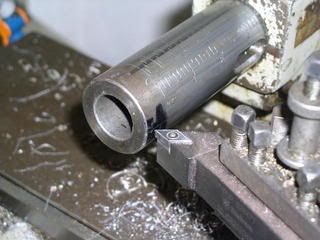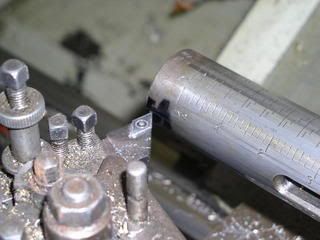The other day my stand finally arrive for my dial indicator so I used it last night to set up my tools rather than just going by eye lining up the cutting edge with the point on my dead centre on my lathe.
By eye I was probably out by between 0.3 to 0.5mm off centre with my tools and with the DI I managed to get it virtually spot on. The difference this made for my parting tool was amazing and I now get a much better finish with my regular cutting tools.
I always knew my tools would work better if properly positioned but I was amazed by how much a difference it makes.
If there are any other newbies out there like me that don't have a dial indicator yet I strongly suggest getting one.
Now to save up and get my quick change tool holders.
By eye I was probably out by between 0.3 to 0.5mm off centre with my tools and with the DI I managed to get it virtually spot on. The difference this made for my parting tool was amazing and I now get a much better finish with my regular cutting tools.
I always knew my tools would work better if properly positioned but I was amazed by how much a difference it makes.
If there are any other newbies out there like me that don't have a dial indicator yet I strongly suggest getting one.
Now to save up and get my quick change tool holders.
























![DreamPlan Home Design and Landscaping Software Free for Windows [PC Download]](https://m.media-amazon.com/images/I/51kvZH2dVLL._SL500_.jpg)









































